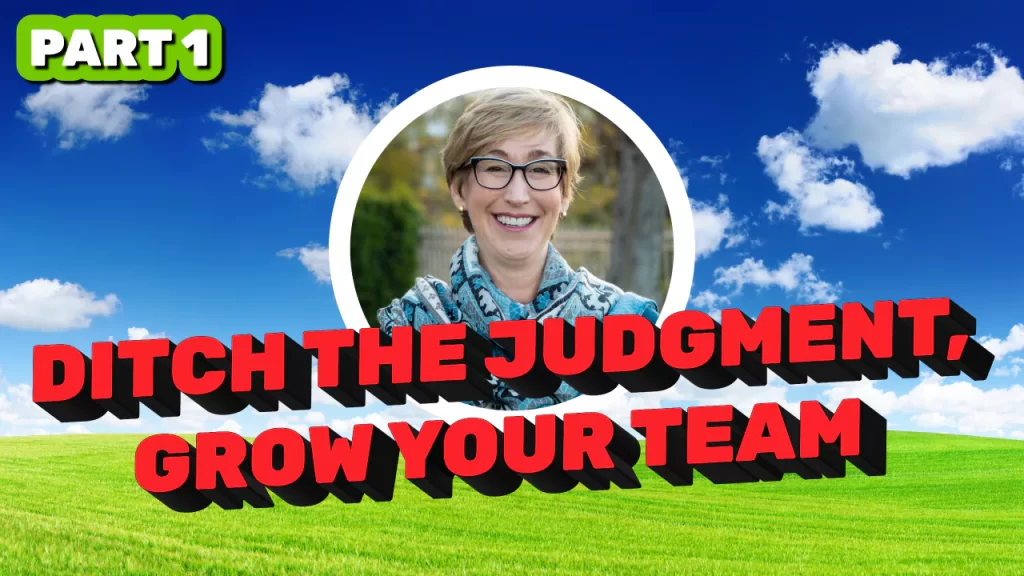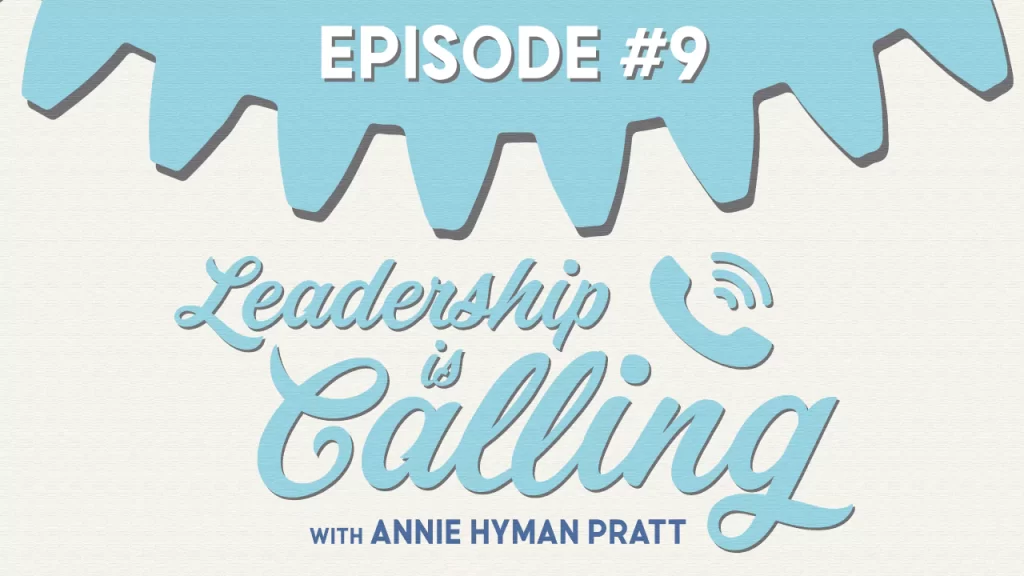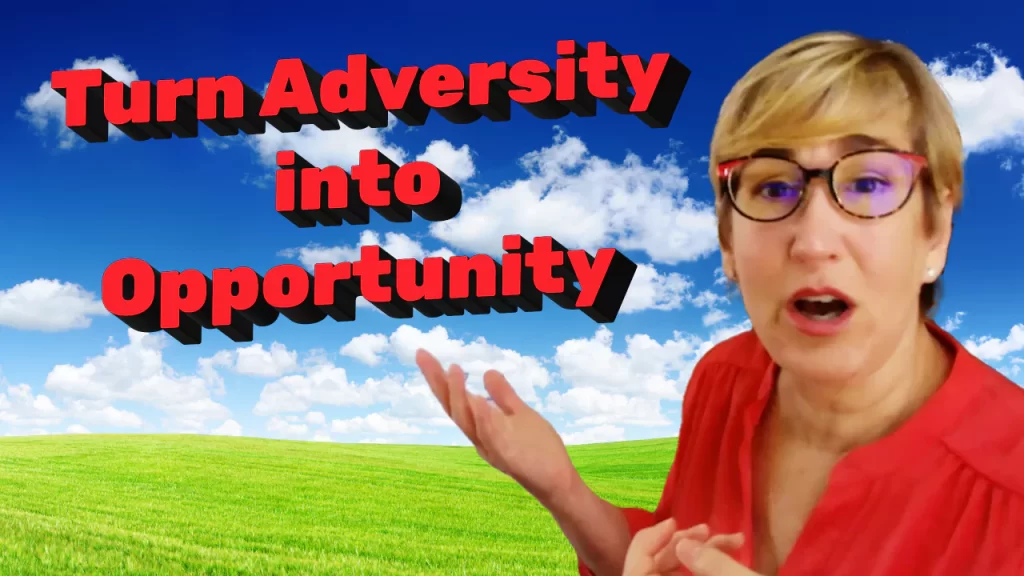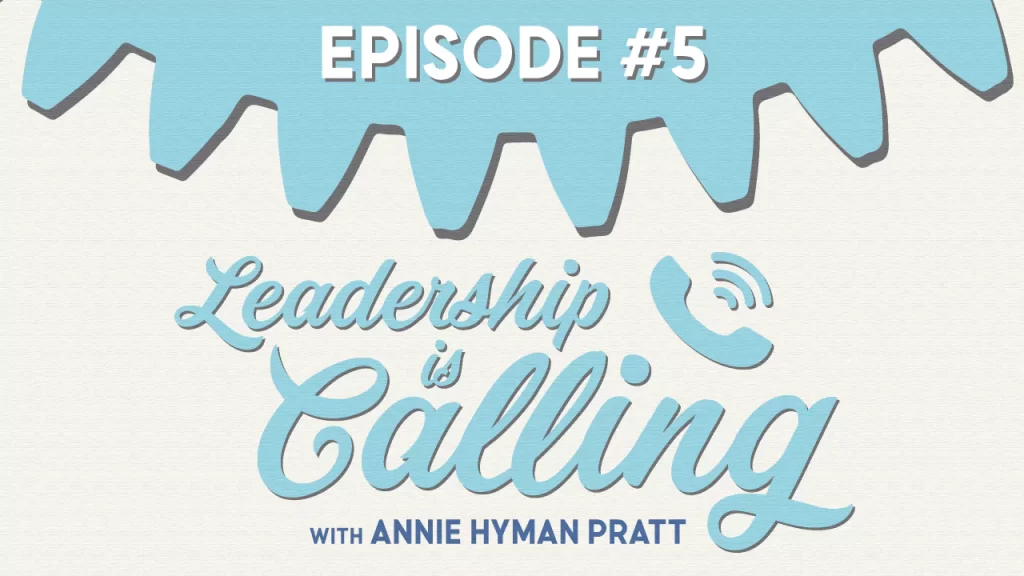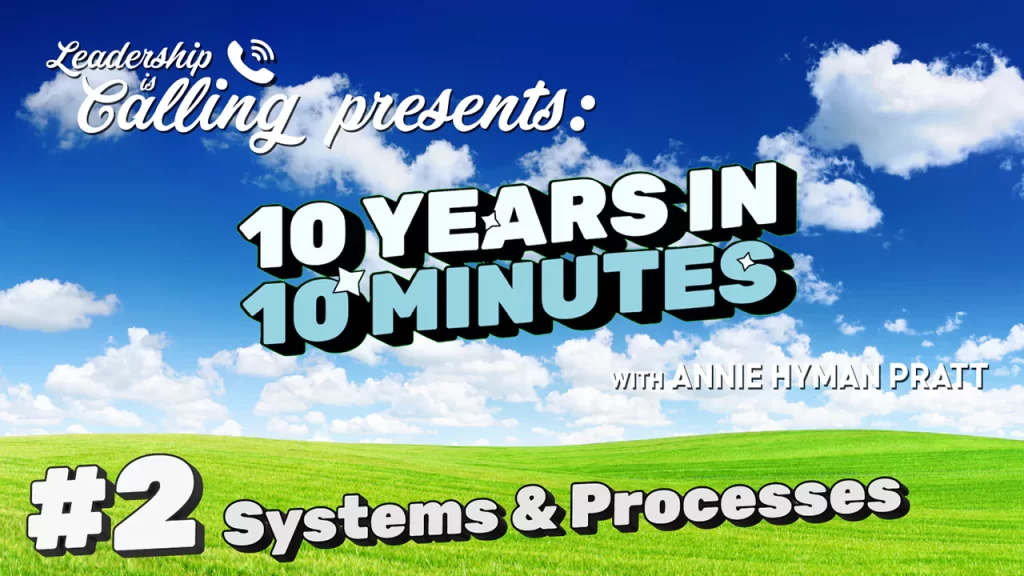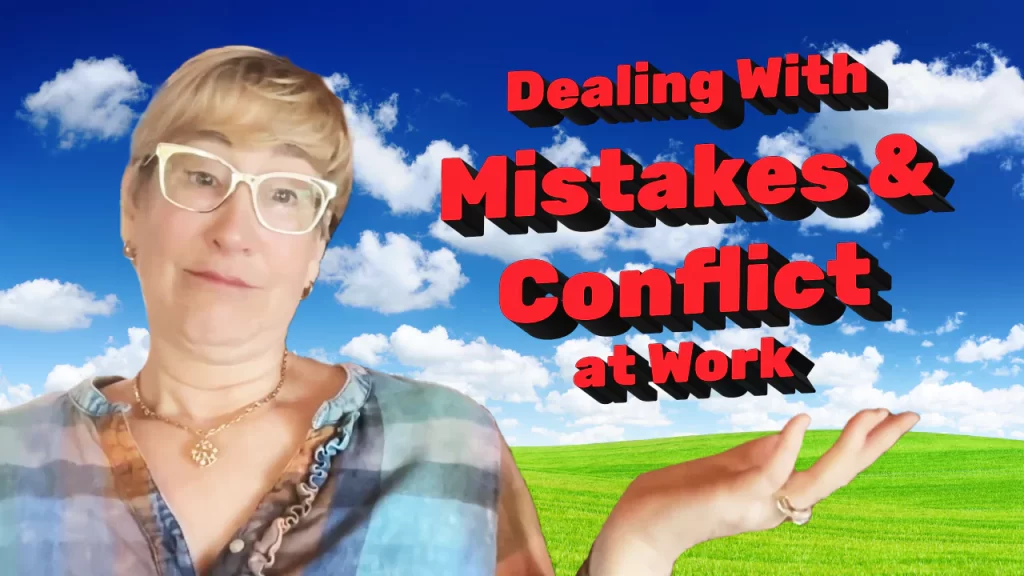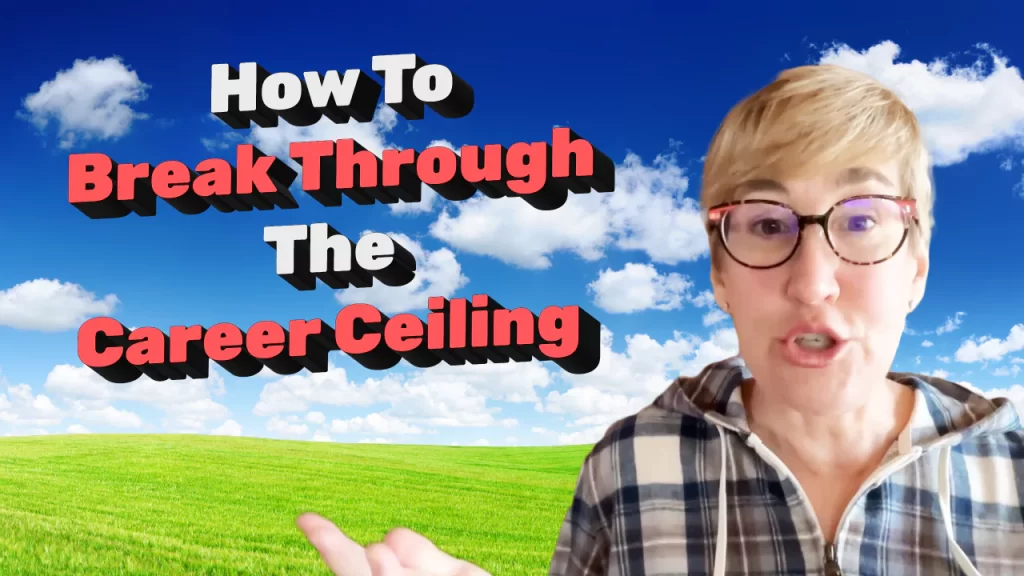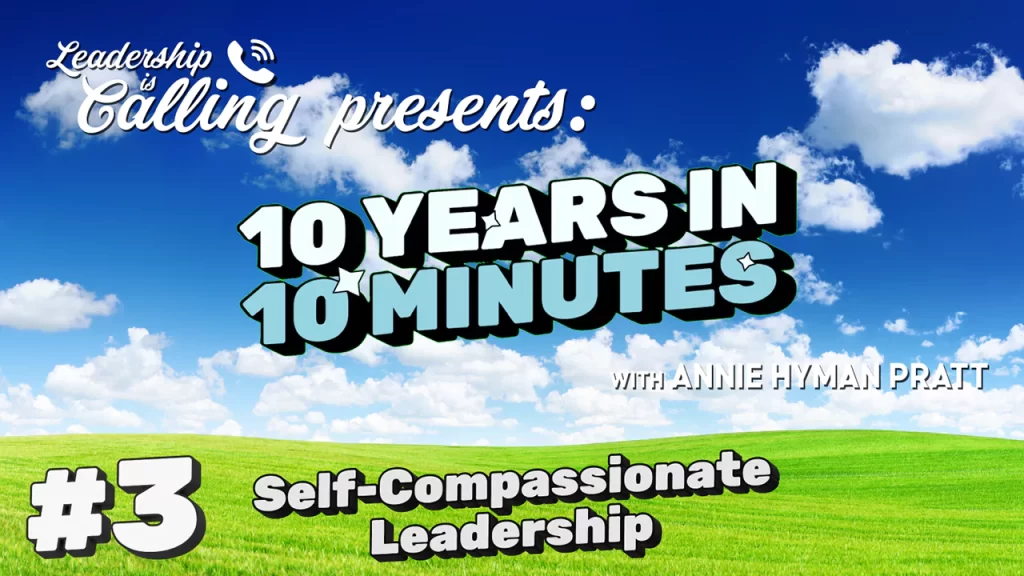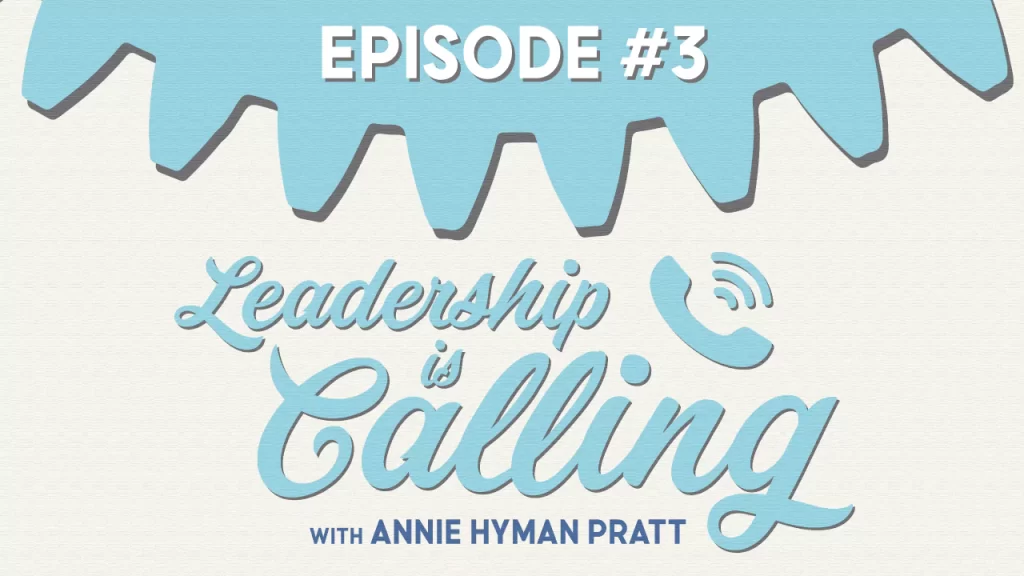Episode #17: How to Thrive During an Economic Downturn
Leadership is Calling Episode #17, 10 Years in 10 Minutes Series #6
Annie Hyman Pratt
- Description
- Transcript
How to Thrive During an Economic Downturn
“It took me more than 10 years to learn this. I needed to go through downturns to realize how business cycles really work.” -Annie
On this episode of Ten Years in Ten Minutes, Annie talks about finding the opportunity during a downturn to keep your business moving forward.
As a business leader who has been through multiple economic downturns, Annie shares her advice for surviving and thriving during volatile times. When volatility, uncertainty, complexity and ambiguity are high, business as usual won’t cut it. Focus less on rigid goals and more on stabilizing your downward trajectory. Test, iterate, and build for the future instead of relying on the past. Letting go of what used to work allows you to find what will work now. Withstand the downturn so you’re ready to ride the next wave up. Annie has learned firsthand that enduring the downturns ultimately allows you to capitalize when the next growth cycle begins. Take steps now to stop the bleeding, bridge to the future, and verify the emerging opportunities.
Key Points
- Prioritize movement and learning over rigid goal achievement in uncertain times
- Focus on stabilizing your business to stop downward acceleration
- Test and iterate to find what will work in the new normal
- Let go of what worked in the past and build for the future
- Endure the downturn to be ready for the next up-cycle
Related Resources
More information: The Business Part
Articles: Leadership in Times of Uncertainty | How to Navigate the Unknown in Challenging Times
Book: The People Part by Annie Hyman Pratt

Auto-Generated Transcript – unedited version
How to Thrive During an Economic Downturn
Today I’m going to talk about a term called VUCA. Some of you may have heard of this term. It’s an acronym and it stands for a business environment, a type of business environment where we have a lot of volatility, a lot of uncertainty, a lot of complexity and a lot of ambiguity. And for most businesses today, the clients we’re working with for sure, they’re experiencing a level of VUCA that they haven’t seen in over a decade.
This is my fourth kind of big business downturn since I’ve been working in business as an executive and as an owner. And this kind of environment I think of as it kind of changes everything. Like the way we normally do business won’t work anymore. The things that worked yesterday are no longer working today, and the change is so fast. That’s the volatility part right? I think that not only are we experiencing a lot of economic changes but it all got exacerbated by the pandemic.
So we have clients that benefited some from the pandemic in that online sales went up. Now that the economy has turned down and all kinds of things have happened in the external environment, lots of clients now are experiencing an extremely severe drop in revenue, extremely severe drop in revenue. That’s major volatility.
It’s highly uncertain when it’ll come back and when it comes back we don’t know if it’s going to be the same kind of revenue. This is an environment where everything’s changing – consumer habits are changing, what people think is important is changing, where they have to spend their money and their time is changing. So the uncertainty for what’s going to be next is huge.
One of the things that adds to the uncertainty, it kind of goes right into complexity, is that for most businesses technology is having a giant impact and making things more complex. For so many businesses that are online for example, the online businesses, the advertising environment has become a lot more complex.
Well even for regular businesses right? And they’re going to advertise online. Originally there was just like Google for online. Then you know we got Facebook, we have Google and Facebook. Now there are so many social platforms. There are not just Google there’s other search engines that you know people actually do use some. There is oh gosh not only is there TV there’s cable stations. There are all these streaming platforms. It’s just the environment has become a ton more complex.
It’s not like you can shoot one thing and it’s you know perfectly tailored for 50 different outlets when you know when you used to be able to just put it on you know NBC or CBS and you were done. So the complexity is huge. And then the ambiguity I think of this ambiguity as the big confidence killer because the ambiguity is that you don’t know if the results are strong or weak. You don’t know if they’re good or bad because just because you get a result that’s down, that’s less than expected, it could be that you actually have performed really well. And if you hadn’t let’s say you’re down 20 in a promotion that you expected to be 20 higher.
Okay what we don’t know is if we hadn’t worked so hard, if we hadn’t made some changes that we made, maybe we’d be down 40 percent, maybe down 20 is actually quite good in this environment. So this ambiguity is so hard because a goal becomes really difficult. It’s just that it’s even hard to set goals. We are not positive what a good job looks like in this environment.
Okay so in this kind of environment, the big thing is the big question is what the heck do you do? What should the bench, this owner and leaders do differently? And the big thing that we need to do differently is to prioritize movement and learning over goal achievement. It’s just so important. If you work you know your heart out for the goal achievement, you can spend way too much resources and completely miss the goal instead of starting to kind of learn and understand what will work in this environment because that’s the place to start with. We don’t know, we don’t know what’s going to work in this environment and we don’t know where the environment is heading. We don’t know where tomorrow’s opportunities are going to be.
And and and that’s why I want to take a moment and talk about business cycles. This is how I think of business of course this is a simple drawing of it but business. I have never worked with the business that went more than a decade without having a significant or a meaningful downturn in it right? Okay so when we are in this part where a particular industry or the economy is really growing, it’s great because the rising tide kind of raises all votes. It’s hard to mess up enough to kill yourself in this kind of environment. It’s like you get to set goals, you achieve them, your year over year growth is fantastic. You get all used to the fact that you’re a winner.
Okay and then you get a time like this where the tide is falling and the tide is absolutely bringing you know everybody down. You know we definitely have perfectionists out there who think that they can avoid this downturn but I haven’t met one yet who actually could totally avoid this downturn.
Okay okay so what we’re going for in a downturn like this that we’re in right now is that we get stabilized. That’s the first thing we’re going for is to stabilize so that we stop falling off the cliff right? We stop the downward acceleration and when we get a little bit more stabilized then we really want to look towards the future because here’s the thing, here’s the thing I should have said a second ago. When we’re in this kind of environment it feels like the world is over, like it’s never going to come back but what we know is another upcycle is coming for sure. It’s coming, we just don’t know when.
But what we do know is we have to be around to catch it. It’s like you know in the in the water metaphor it’s like you know if we want to catch the big wave we have to be in the water when it happens. And so this is the part that we need to endure, that we need to get through, that we need to prepare ourselves to spot and ride this new wave. So when we’re here we know that the business is going to be very different.
First we want to stop the acceleration down and then to bridge over we want to test things, we want to do a lot of testing. What we don’t want to do is slide all the way down to the bottom. When we have clients, when I’ve worked with clients in the past who just couldn’t stop this down cycle, who couldn’t stop the acceleration, if you get all the way to the bottom it’s pretty hard to stay in business. It just is.
So we want you to stop that acceleration and then you start to bridge over for what’s going to be the new opportunities. We try to let go of old stuff as much as possible and test and iterate right? Test, learn, iterate for what is going to be the things that are working now that are that we can see hold some opportunity for the future. And as we’re doing that we are looking to verify the new opportunity.
Because when you’re in business in a time like this you are truly building for the future because the old way, the past, it’s over. Maybe it’s not like over overnight but you’re here, it’s getting over pretty fast. Things are going to be very different in the future. And so we want to start figuring that out now. It’s a time where we need to survive but we also need to be testing, learning, doing different things, lowering the risk so we can try more things to see what gets traction so that we can get this new opportunity going.
I started this talk, this 10 minute talk, with talking about VUCA right? Volatility, uncertainty, complexity and ambiguity. We are in that kind of environment right now. And we are the thing about all that stuff is it holds the opportunity for the the future and we want your business to be one of the ones that really is able to survive this and you know get a you know bridge across so that you are one of the big beneficiaries of the new opportunities.
And that’s what took me more than 10 years to learn. I think I needed to go through a couple down cycles to realize it really worked like this. And I hope you get a great takeaway for your own business today. To learn more about this episode’s topic pick up a copy of my book The People Part.

